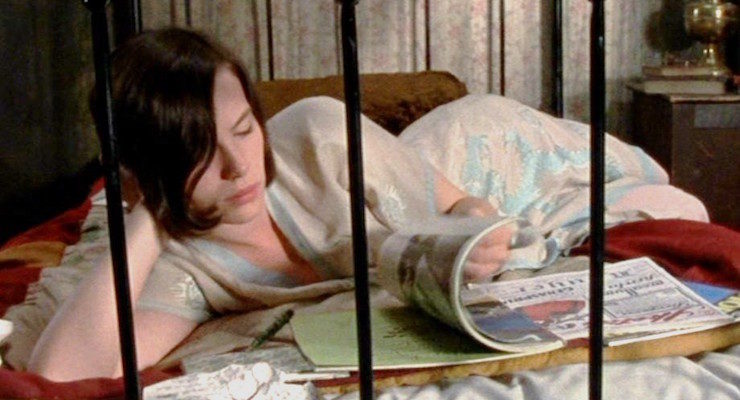The 1930s was a fascinating decade in U.S. and European history. The Great Depression and the rise of fascism dominate historical retrospectives of the period, but many other interesting things went on, including modernist art movements and the evolution of jazz and the entry of women into the workforce. The decade also saw the rise of the science fiction pulp magazines, with the origin of Astounding Tales of Super-Science to go along with Amazing Stories and a host of other fiction pulps and comic books.
Most of the “serious” literature of the decade was realism—this was the heyday of Hemingway and Steinbeck, Faulkner and Thomas Wolfe. Over the years I have noted a clutch of 1930s books by young writers who were never associated with the pulps yet that do not fit easily into the dominant paradigm. All of them have, if not a direct fantastic premise, some tangential connection with the strange. Though some, like Cold Comfort Farm, have devoted followings today, most of these writers never really got much attention from genre readers. If 1930s fiction in the U.S. and Britain were a large club, pulp writers were for the most part not let in the door—but I can imagine these writers having a separate room in the back. I suspect the conversation between them might be more interesting than that going on in the big room between Hemingway and Steinbeck.
Cold Comfort Farm, by Stella Gibbons (1932)
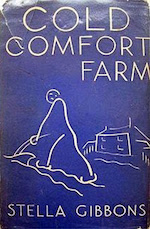 Gibbons wrote a lot of books in her career, but this one was her first novel, and many consider it her best. Orphaned heroine Flora Poste goes to live with her eccentric relatives the Starkadders in Sussex. Most books about a young woman thrust into a rural gothic environment demonstrate how this naïf is at the mercy of the rude and darkly mysterious countryfolk. In this satire of the doom-laden works of writers like Thomas Hardy and D.H. Lawrence, the countryfolk are bonkers and Flora, a thoroughly up-to-date and practical young woman, sets about modernizing their practices. One of the peculiar elements of this story is that it is set more than ten years in the future, after the “Anglo-Nicaraguan War,” and in the England described many people have private aeroplanes, there is a club in London with a glass floor built over the Thames, and there are video phones. It’s a very funny book. Poor Aunt Ada Doom has never been the same since she “saw something nasty in the woodshed” back in 1869.
Gibbons wrote a lot of books in her career, but this one was her first novel, and many consider it her best. Orphaned heroine Flora Poste goes to live with her eccentric relatives the Starkadders in Sussex. Most books about a young woman thrust into a rural gothic environment demonstrate how this naïf is at the mercy of the rude and darkly mysterious countryfolk. In this satire of the doom-laden works of writers like Thomas Hardy and D.H. Lawrence, the countryfolk are bonkers and Flora, a thoroughly up-to-date and practical young woman, sets about modernizing their practices. One of the peculiar elements of this story is that it is set more than ten years in the future, after the “Anglo-Nicaraguan War,” and in the England described many people have private aeroplanes, there is a club in London with a glass floor built over the Thames, and there are video phones. It’s a very funny book. Poor Aunt Ada Doom has never been the same since she “saw something nasty in the woodshed” back in 1869.
His Monkey Wife, by John Collier (1930)
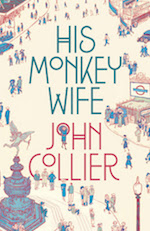 Collier, another British writer, is better known to genre readers as the author of Fancies and Goodnights, a collection of acerbic, witty fantasies that won the first International Fantasy Award in 1952. He also had a long, successful career as a screenwriter in Hollywood, writing films that starred Katherine Hepburn, Cary Grant, Bette Davis, and Charlton Heston among others. His Monkey Wife is one of the strangest, funniest, and savagely satiric novels ever written, a takedown of British imperial attitudes and the “modern woman.” Mr. Fatigay, a dunderheaded schoolteacher just back from Africa, brings home his chimpanzee servant Emily to give to his heartless fiancée Amy. Unknown to anyone, Emily is intelligent, has learned English from reading the books in Mr. F’s library, and has fallen hopelessly in love with him. Imagine Jane Eyre with a chimp in the role of Jane and you get some of the sense of this book. Emily is perhaps the most charming heroine of 20th century literature, Mr. Fatigay the densest of heroes, and Amy the cruelest of adversaries. But rest assured, it all works out wonderfully in the end.
Collier, another British writer, is better known to genre readers as the author of Fancies and Goodnights, a collection of acerbic, witty fantasies that won the first International Fantasy Award in 1952. He also had a long, successful career as a screenwriter in Hollywood, writing films that starred Katherine Hepburn, Cary Grant, Bette Davis, and Charlton Heston among others. His Monkey Wife is one of the strangest, funniest, and savagely satiric novels ever written, a takedown of British imperial attitudes and the “modern woman.” Mr. Fatigay, a dunderheaded schoolteacher just back from Africa, brings home his chimpanzee servant Emily to give to his heartless fiancée Amy. Unknown to anyone, Emily is intelligent, has learned English from reading the books in Mr. F’s library, and has fallen hopelessly in love with him. Imagine Jane Eyre with a chimp in the role of Jane and you get some of the sense of this book. Emily is perhaps the most charming heroine of 20th century literature, Mr. Fatigay the densest of heroes, and Amy the cruelest of adversaries. But rest assured, it all works out wonderfully in the end.
Finnley Wren, by Philip Wylie (1934)
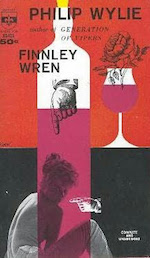 Wylie is known in the sf world, if at all, as author of Gladiator, which many believe was the inspiration for Superman. He was the co-author of When Worlds Collide, and wrote The Disappearance, a 1951 novel in which the male and female halves of the human race are spontaneously split into parallel universes. At one time he was the publicly famous social critic who wrote the cranky jeremiad Generation of Vipers. Finnley Wren is ostensibly the story of a weekend that Philip Wylie, a character in his own novel, spends with the eponymous Wren, a New York advertising man undergoing an emotional crisis. It’s an odd book written somewhat in the manner of 18th century novels like Tristram Shandy. It contains several sideways assaults on modern women (was this a thing in the 1930s?) and contains two little tossed-off fables, one about a thousand-mile-high giant who appears in the North Atlantic and kicks the stuffing out of New York City, and another about an immortality drug that has the unfortunate side effect of turning the user green. I’m sure that I don’t agree with Wylie or Wren about any number of things they seem to be very certain of, but Wylie’s knockabout commentary on U.S. manners and mores is worth it if only for Wren’s harrowing description of a Canadian forest fire he experienced when he was in high school.
Wylie is known in the sf world, if at all, as author of Gladiator, which many believe was the inspiration for Superman. He was the co-author of When Worlds Collide, and wrote The Disappearance, a 1951 novel in which the male and female halves of the human race are spontaneously split into parallel universes. At one time he was the publicly famous social critic who wrote the cranky jeremiad Generation of Vipers. Finnley Wren is ostensibly the story of a weekend that Philip Wylie, a character in his own novel, spends with the eponymous Wren, a New York advertising man undergoing an emotional crisis. It’s an odd book written somewhat in the manner of 18th century novels like Tristram Shandy. It contains several sideways assaults on modern women (was this a thing in the 1930s?) and contains two little tossed-off fables, one about a thousand-mile-high giant who appears in the North Atlantic and kicks the stuffing out of New York City, and another about an immortality drug that has the unfortunate side effect of turning the user green. I’m sure that I don’t agree with Wylie or Wren about any number of things they seem to be very certain of, but Wylie’s knockabout commentary on U.S. manners and mores is worth it if only for Wren’s harrowing description of a Canadian forest fire he experienced when he was in high school.
War With the Newts, by Karel Čapek (1936)
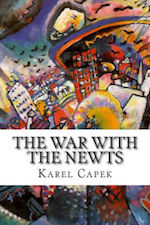 Among genre readers Čapek is best known as the inventor of the word “robot” in his play Rossum’s Universal Robots. He is one of the great speculative fiction writers of the 20th century, a satirist who used the fantastic in many of his best works to chide the human race for its idiocies. The novel is an assembly of documents, stories, newspaper clippings, anecdotes, business reports, interviews, and scientific papers describing humans’ discovery, enslavement, exploitation of, and threatened destruction by a fast-breeding race of intelligent newts discovered on a remote island. In the course of this farce, Čapek demolishes just about every aspect of human civilization, from capitalism to communism to fascism, from fashions and lynching to religious schools and Hollywood, from clueless scientists to shallow media. Čapek is the ancestor of Kurt Vonnegut, and his peculiar, deeply humane satire is both scathing and liberating. Čapek’s outspoken critique of fascism in Germany put him on Hitler’s enemies list, and when the German army rolled into Prague in 1938 one of the first things they did was to visit Čapek’s home to arrest him. Unfortunately for them, Čapek had died several months before.
Among genre readers Čapek is best known as the inventor of the word “robot” in his play Rossum’s Universal Robots. He is one of the great speculative fiction writers of the 20th century, a satirist who used the fantastic in many of his best works to chide the human race for its idiocies. The novel is an assembly of documents, stories, newspaper clippings, anecdotes, business reports, interviews, and scientific papers describing humans’ discovery, enslavement, exploitation of, and threatened destruction by a fast-breeding race of intelligent newts discovered on a remote island. In the course of this farce, Čapek demolishes just about every aspect of human civilization, from capitalism to communism to fascism, from fashions and lynching to religious schools and Hollywood, from clueless scientists to shallow media. Čapek is the ancestor of Kurt Vonnegut, and his peculiar, deeply humane satire is both scathing and liberating. Čapek’s outspoken critique of fascism in Germany put him on Hitler’s enemies list, and when the German army rolled into Prague in 1938 one of the first things they did was to visit Čapek’s home to arrest him. Unfortunately for them, Čapek had died several months before.
The Edge of Running Water, by William Sloane (1939)
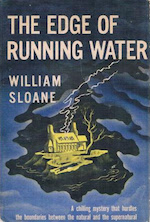 I seem to be hooked on satirical fantasies of various sorts. This one, however, is not satire, but a fine example of “Cosmic Horror” of the sort H.P. Lovecraft wrote, except that Sloane is, for my money, ten times the writer that Lovecraft is. Along with Sloane’s To Walk the Night, it is one of the scariest novels I have ever read. Sloane wrote only these two novels, and later became better knows for founding a press, William Sloane Associates, and teaching at the Bread Loaf writer’s workshop. The Edge of Running Water tells the story of a scientist, Julian Blair, bereft after the death of his wife, who invents a device to communicate with the dead. It’s a slow-building tale with elements of murder mystery that climaxes in a hair-raising scene of a breakdown of the wall between the living and the dead. Both Robert Bloch and Stephen King have praised Sloane; he deserves to be read today as much as anyone who has written this kind of fiction, and more than most.
I seem to be hooked on satirical fantasies of various sorts. This one, however, is not satire, but a fine example of “Cosmic Horror” of the sort H.P. Lovecraft wrote, except that Sloane is, for my money, ten times the writer that Lovecraft is. Along with Sloane’s To Walk the Night, it is one of the scariest novels I have ever read. Sloane wrote only these two novels, and later became better knows for founding a press, William Sloane Associates, and teaching at the Bread Loaf writer’s workshop. The Edge of Running Water tells the story of a scientist, Julian Blair, bereft after the death of his wife, who invents a device to communicate with the dead. It’s a slow-building tale with elements of murder mystery that climaxes in a hair-raising scene of a breakdown of the wall between the living and the dead. Both Robert Bloch and Stephen King have praised Sloane; he deserves to be read today as much as anyone who has written this kind of fiction, and more than most.
The existence of these books is I suppose a testimony to two things. First; the list of interesting writers and novels of any period goes well beyond the ones who have been canonized. Second: although a book may be limited by the culture of its time, it can still speak across the years to readers who are open to letting themselves be brought into its vision of the world. What seems transparently true to us today is just as likely to date as what Wylie and Collier thought in 1934—and just as likely to be universal.
Top image: Cold Comfort Farm (1995)
John Kessel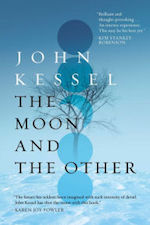 lives in Raleigh, North Carolina with his wife, novelist Therese Anne Fowler. He is a professor and the director of creative writing at North Carolina State University. He is the author of The Baum Plan for Financial Independence and Other Stories, Corrupting Dr. Nice, Good News from Outer Space, and, most recently, The Moon and the Other, available now from Saga Press.
lives in Raleigh, North Carolina with his wife, novelist Therese Anne Fowler. He is a professor and the director of creative writing at North Carolina State University. He is the author of The Baum Plan for Financial Independence and Other Stories, Corrupting Dr. Nice, Good News from Outer Space, and, most recently, The Moon and the Other, available now from Saga Press.










